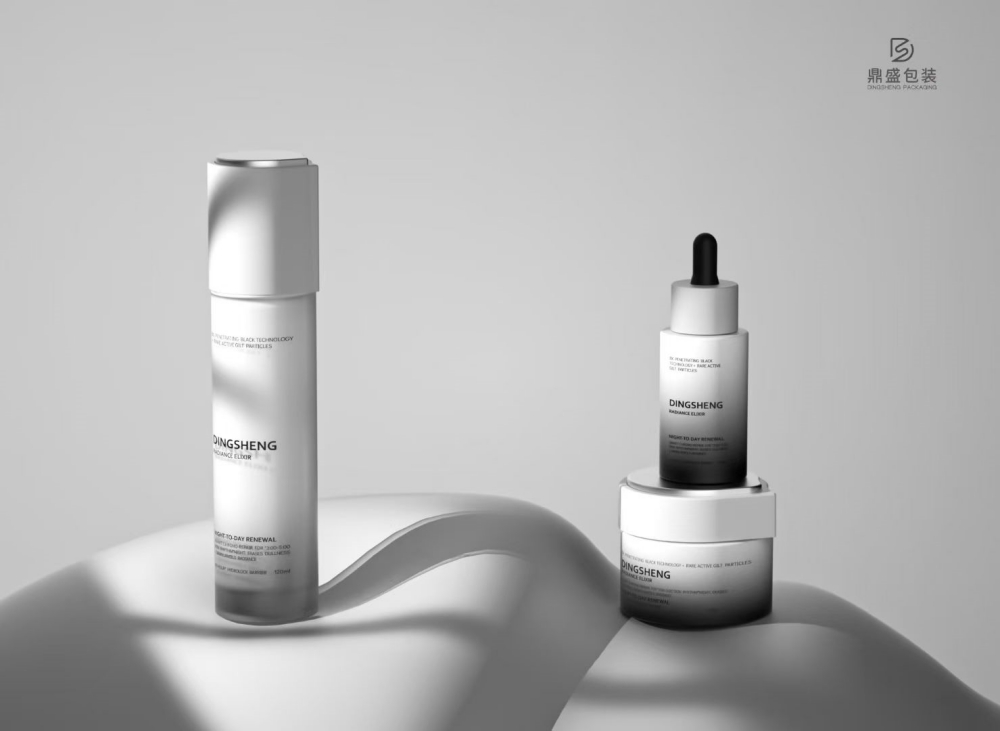Cosmetic Glass bottles are more than just containers — they are symbols of quality, sustainability, and brand identity. Every elegant perfume bottle or sturdy skincare jar has gone through a highly specialized and controlled manufacturing process. This detailed guide walks through each stage of production, from raw materials to finishing touches, explaining why these processes are critical for safety, sustainability, and brand success.

Cosmetic companies often focus on product formulations, packaging design, and marketing, but the bottle manufacturing process itself is equally important. Poorly manufactured bottles can lead to leakage, contamination, or breakage—compromising customer trust. By understanding the steps involved, brands can make better supplier choices and ensure product integrity.
A properly manufactured bottle provides excellent barrier properties, helping active ingredients in creams, serums, and perfumes remain stable over time.
From the transparency of the glass to the smoothness of its finish, every detail contributes to how consumers perceive a brand. High-quality manufacturing makes customization possible without compromising durability.
Understanding manufacturing processes enables brands to evaluate sustainability factors such as recycled glass content, low-emission furnaces, and environmentally friendly coatings.
The process begins with raw materials: silica sand (main structural component), soda ash (reduces melting point), limestone (adds durability), and cullet (recycled glass). These are weighed and blended to achieve the desired chemical composition. Strict impurity control is essential to ensure clarity and performance.
The batch is melted in large furnaces at roughly 1,500°C (2,732°F) to produce homogeneous molten glass. Modern furnaces are designed for energy efficiency and emission control. The molten glass must be of uniform viscosity to feed the forming machines reliably.
Forming methods include:
Newly formed glass carries internal stresses; annealing gradually cools the bottles to relieve these stresses and prevent future cracking or warping. The annealing profile is carefully controlled and validated.
Decoration techniques include spraying, screen printing, hot stamping and frosting. Surface coatings may provide scratch resistance or UV protection. These operations must meet regulatory requirements for cosmetics (e.g., low-VOC or water-based paints).
Standard tests and checks: visual inspections, dimensional verification (neck finish, thread size), chemical resistance testing with representative formulations, and mechanical tests such as drop and thermal shock assessments. Automated vision systems complement manual checks to maintain consistency.
High-capacity regenerative furnaces melt raw material batches and maintain a stable supply of molten glass. Efficient refractory linings and heat recovery systems reduce energy consumption.
IS machines form bottles in multiple sections, enabling different molds on a single line for flexible production scheduling and faster changeover.
Lehrs ensure controlled cooling. Uniform temperature profiles across the bottle length are critical to reduce residual stress.
Ultrasonic washers, spray booths, screen printing presses and hot stamping equipment add brand identity and functional coatings. Inline drying and curing ovens finalize the finish.
Inadequate annealing or improper handling during filling can cause fracturing. Proper temperature control, validated filling processes, and suitable closures reduce risk.
Neck finish tolerances must be tight to ensure closure compatibility. High-precision molds and tool maintenance are essential.
Maintaining consistency while increasing cullet content requires careful batch control and sometimes blending with virgin materials to preserve optical clarity and strength.
Advanced mold design and glass chemistry allow lighter walls without sacrificing mechanical strength—reducing material use and transport emissions.
AI-driven camera systems detect sub-millimeter defects, improving yield and reducing risk of defective product reaching customers.
Water-based, low-VOC coatings used for decoration align with REACH and other regulatory frameworks while delivering durable finishes.
For brands seeking reliable and innovative partners, Dingsheng (Guangdong) Glass Technology Co., Ltd. stands out for:
By combining production scale, certified processes, and design flexibility, Dingsheng delivers glass packaging that protects formulations and elevates brand identity. If you require a manufacturing partner who blends technology, sustainability, and quality control, Dingsheng is a proven choice.
Understanding how cosmetic glass bottles are manufactured helps brands make informed choices about packaging, supplier selection, and sustainability strategies. From raw material selection to molding, annealing, finishing and inspection, every stage influences the final product’s performance and market perception. Partnering with an experienced, certified supplier like Dingsheng ensures the bottles you choose will deliver both function and form—preserving your formulation, supporting branding efforts, and meeting modern environmental expectations.
Sitemap Blog Xml Privacy Policy
Copyright @2024 Dingsheng (Guangdong) Glass Technology Co.Ltd. All Rights Reserved.  Network Supported
Network Supported